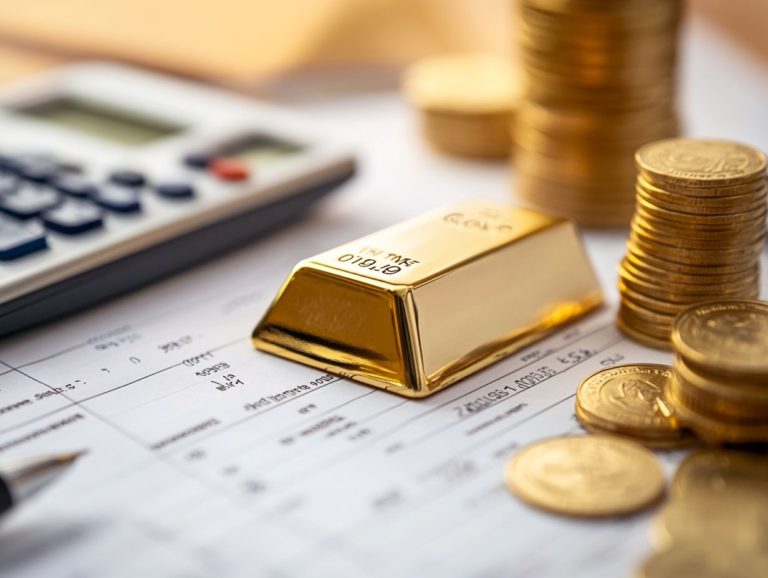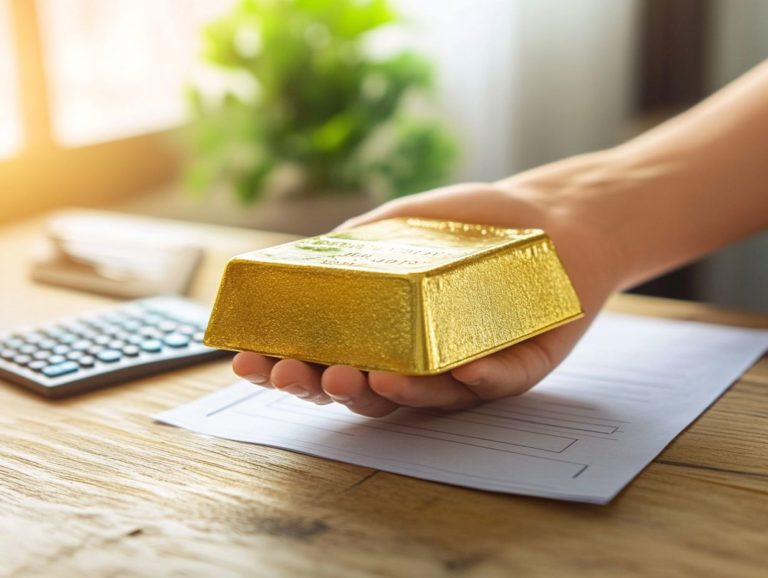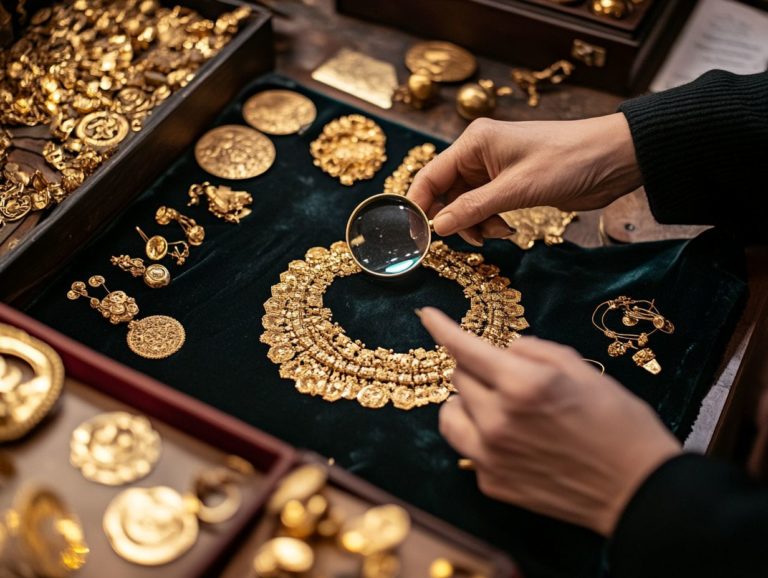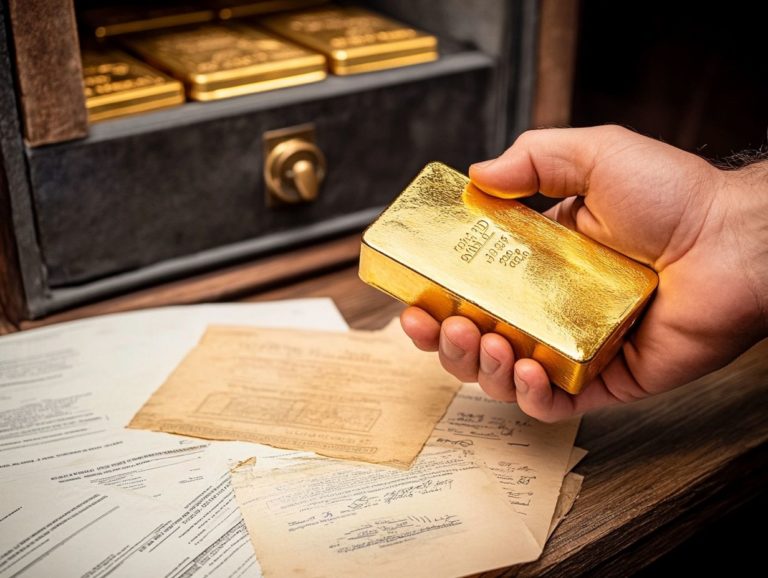Understanding the Gold Mining Process
Gold mining has held humanity’s fascination for centuries, driven by the allure of wealth and the quest for precious resources.
Get ready to explore the fascinating world of gold mining! We ll begin with its definition and historical context, while showcasing the evolution of mining techniques over time.
You will explore various methods, including placer, underground, and open-pit mining, while considering the environmental impacts these practices can exert on our planet.
The discussion will also touch upon the challenges facing the industry and the regulations designed to address environmental concerns. Join us as we uncover the complexities of this captivating field.
Contents
Key Takeaways:
- Gold mining extracts gold from the earth using several methods: placer, underground, and open-pit mining.
- Over time, mining techniques evolved from simple tools to advanced technology.
- It’s crucial to manage the environmental impact of gold mining, including effects on land, water, and air.
Overview of Gold Mining
Gold mining is a complex process that extracts gold from various geological formations. It plays a significant role in global economics and impacts local communities.
Companies in Australia, like Macraes and Kalgoorlie, use advanced technology to improve extraction efficiency while addressing safety and environmental issues.
Understanding the entire gold mining cycle, from exploration to rehabilitation, is key to grasping its importance in today’s resource economy.
What is Gold Mining?
Gold mining is extracting gold from the earth, mainly from natural deposits of minerals containing gold found in diverse regions. This process involves several stages, starting with crushing the ore into smaller pieces.
Next, grinding reduces the size further, maximizing surface area for extraction. Then, leaching often uses chemicals like cyanide to separate gold from other minerals.
Gold is highly valued for jewelry and electronics, and it serves as a hedge against inflation and economic uncertainty. Mining methods such as placer and underground mining use specialized equipment like drills and excavators to boost extraction efficiency.
History of Gold Mining
The history of gold mining dates back to ancient civilizations like the Sumerians and Incas. These societies used gold for adornment and currency.
Regions like ancient Mesopotamia and Nubia shaped early extraction techniques. Key figures like Trajan and Justinian advanced mining in Europe, influencing the economic landscape in places like Transylvania and the Kolar Gold Fields.
Evolution of Mining Techniques
The evolution of mining techniques has dramatically transformed the gold extraction process. Advanced technologies and equipment enhance both efficiency and safety.
In ancient times, miners used rudimentary tools like hand-held picks and pans to sift through rivers and soil for elusive gold flakes. Today, the industry embraces innovations such as hydraulic mining and massive excavators that redefine the landscape of extraction.
Modern gold mining operations utilize high-tech drilling rigs to precisely target mineral deposits. They also employ machines that handle the processing of ore automatically to maximize output while minimizing waste.
Technologies like 3D modeling and geophysical surveys significantly improve exploration accuracy. This ensures that no potential site goes overlooked.
The industry is adopting environmentally friendly methods such as bioleaching, which uses microbes to help extract metals. This reflects a shift in focus, demonstrating a commitment to sustainable practices that protect our planet.
Methods of Gold Mining
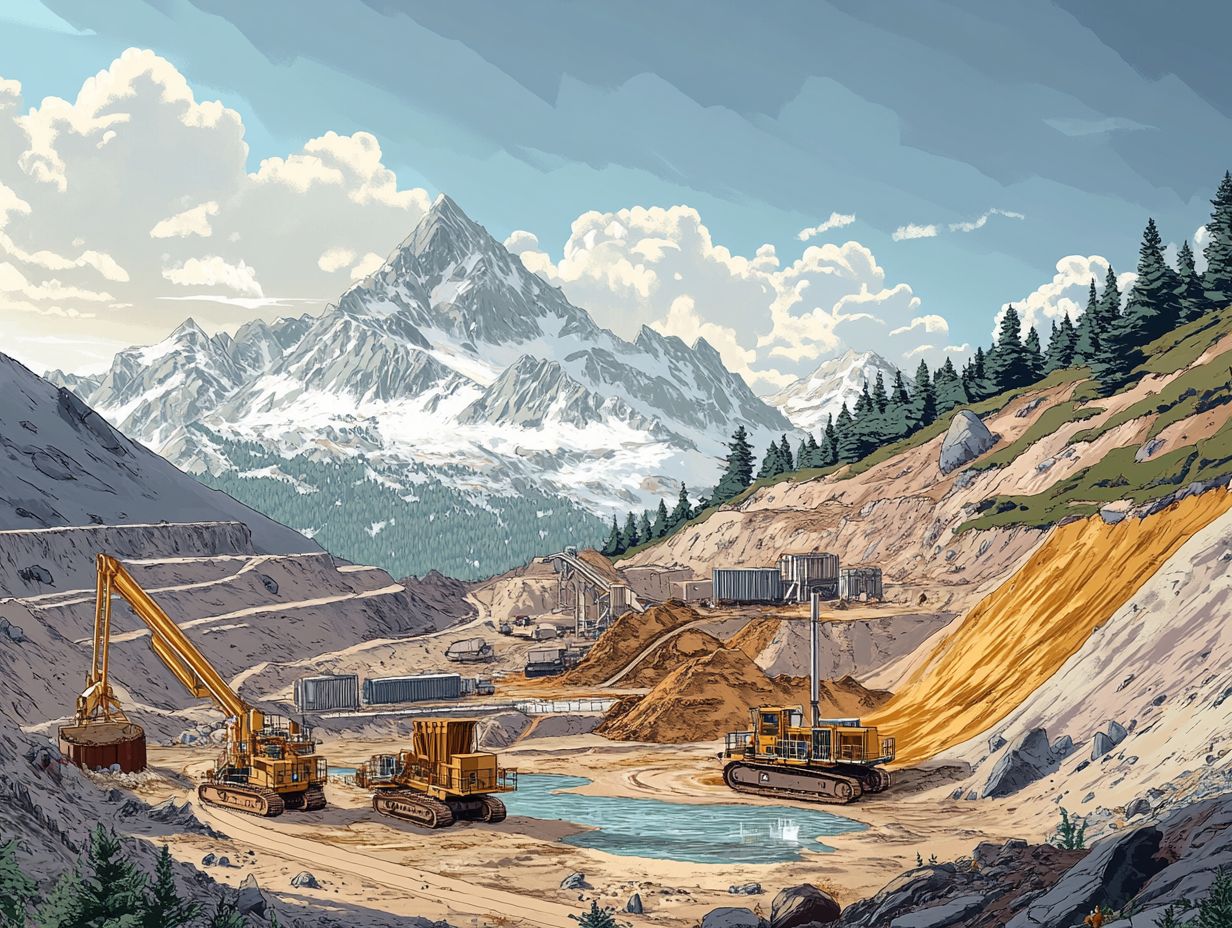
Gold mining methods can be categorized into three primary types: placer mining, underground mining, and open-pit mining.
Each method has distinct processes and unique implications for the extraction of ore bodies.
Placer Mining Techniques
Placer mining is a fascinating method for extracting gold from alluvial deposits. It utilizes the strength of water and gravity to separate gold from other materials.
This technique includes exciting methods like panning, sluicing, and dredging, each designed to suit different scales and environmental conditions.
When you pan for gold, you shake sediment in a pan to isolate heavier gold particles. Sluicing uses inclined troughs that allow water to flow, efficiently washing away lighter materials while capturing the gold.
Dredging involves specialized equipment that scoops up underwater deposits, making it particularly effective in larger bodies of water.
While these methods can yield impressive results, they raise significant environmental concerns. Sediment disturbance and habitat destruction impact local communities relying on these ecosystems for their livelihoods.
Underground Mining
Underground mining accesses precious gold ore bodies nestled deep beneath the earth’s surface. Specialized techniques and robust safety measures ensure efficiency and worker well-being.
The process begins with shaft sinking, where vertical tunnels are drilled to link the surface with hidden ore deposits below. Then, tunneling creates horizontal passages for ore extraction.
Thanks to modern technologies like automated drilling rigs and conveyor systems, production rates soar while risks are minimized.
Safety protocols matter greatly. Regular training sessions and rigorous monitoring ensure everyone follows established procedures.
Ventilation systems tackle harmful gases and maintain a steady flow of fresh air, ensuring a secure working environment for all involved.
Open-pit Mining
Open-pit mining is a surface technique that removes substantial quantities of earth to access gold deposits near the surface. This method efficiently taps into valuable minerals and offers a more economical approach than traditional mining methods.
As vast amounts of soil and rock are excavated, careful planning is essential to minimize environmental disruption. Once the ore is extracted, it is transported to processing plants, where it undergoes various treatments to separate gold from other materials.
These plants utilize advanced technologies such as crushing, grinding, and chemical extraction to optimize yield.
While open-pit mining is effective for resource extraction, it raises significant concerns regarding habitat destruction and water pollution. A thoughtful evaluation of its long-term sustainability is imperative.
Environmental Impact of Gold Mining
Gold mining has a profound impact on our environment, affecting land, water, and air quality.
This raises urgent sustainability concerns for local communities and questions about rehabilitation efforts.
Effects on Land, Water, and Air
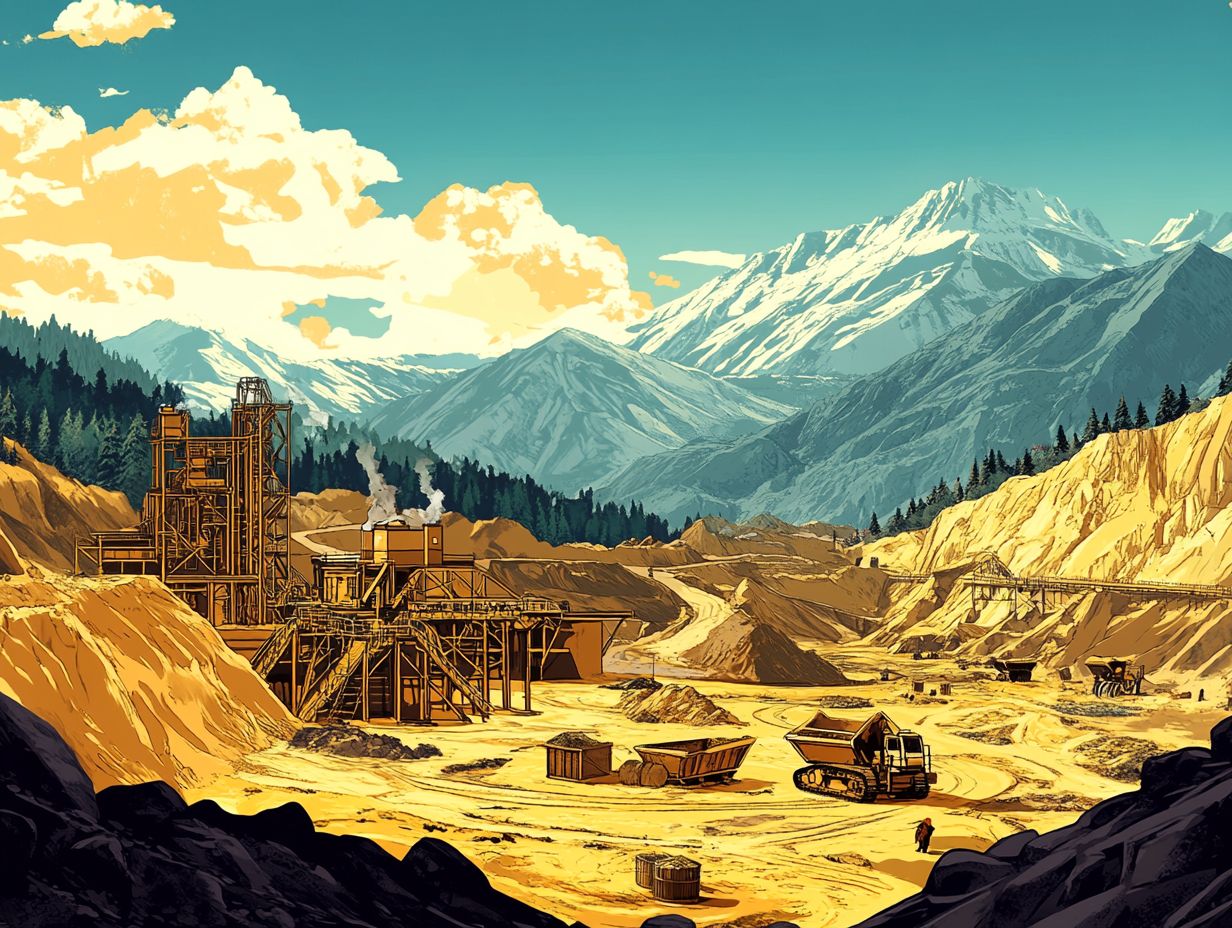
Gold mining can lead to severe ecological damage, affecting land, water, and air quality.
In places with lax regulations, this can result in deforestation, habitat destruction, and soil erosion. For example, small-scale mining in Peru has caused widespread mercury contamination in rivers, harming local fish and communities that rely on these water sources.
The dust generated from mining operations can greatly reduce air quality. This pollution endangers local wildlife and poses serious health risks to nearby residents. It’s crucial to adopt sustainable mining practices to mitigate these harmful effects!
Challenges and Regulations in Gold Mining
Gold mining faces many challenges, especially regarding regulations aimed at protecting the environment.
Mining companies must navigate these complexities to ensure compliance and sustainable operations.
Addressing Environmental Concerns
It s vital for mining companies to address environmental concerns by adopting sustainable practices that meet regulatory standards.
This approach reduces ecological footprints and fosters stronger relationships with local communities.
By using advanced technologies to cut emissions and improve efficiency, companies can lessen their impact on ecosystems. Open dialogue and collaborative projects with local populations can enhance social responsibility efforts.
Compliance with Legal Requirements
Compliance with legal requirements is essential in gold mining. Companies must follow various regulations to operate responsibly and sustainably.
These rules cover environmental, labor, and health standards designed to minimize ecological impacts and ensure worker safety.
Navigating this legal landscape can be challenging, especially since regulations vary by region. To succeed, companies should engage with regulatory bodies and stay updated on legal changes.
By using eco-friendly technologies and responsible mining practices, companies fulfill their legal obligations and contribute to a sustainable future!
Frequently Asked Questions
What is the gold mining process?
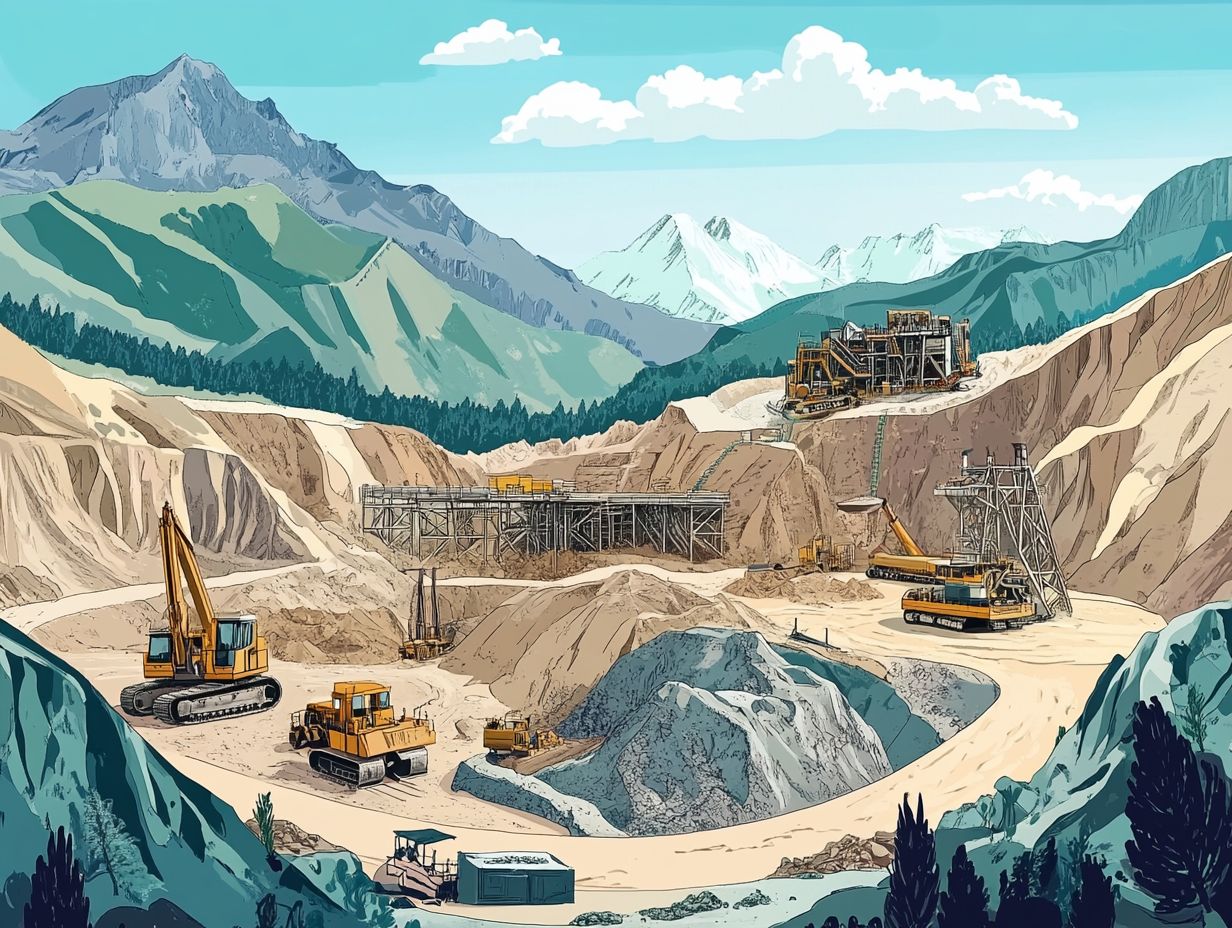
The gold mining process involves extracting gold from the earth using methods like panning, sluicing, dredging, and hard rock mining.
What are the different methods used in the gold mining process?
The methods used in the gold mining process include placer mining, hard rock mining, and by-product mining.
What is placer mining?
Placer mining is the process of extracting gold from alluvial deposits, such as rivers, streams, or ancient riverbeds, through the use of water and gravity.
What is hard rock mining?
Hard rock mining is the extraction of gold from solid rock formations, usually through underground mining or open-pit mining.
What is by-product mining?
By-product mining refers to extracting gold while mining for other metals like copper or silver. Essentially, it’s the gold you get as a bonus during the mining process.
What are the environmental impacts of the gold mining process?
The gold mining process can lead to serious environmental issues. These include deforestation, water pollution, and harm to local ecosystems.
To protect our planet, it’s crucial to follow proper environmental practices and regulations.










